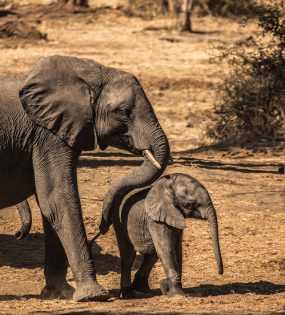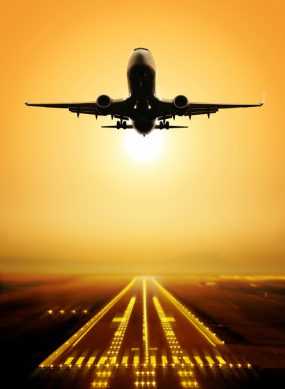Travel Recommendations for the Nursing Mother
 Travel need not be a reason to stop breastfeeding.
Travel need not be a reason to stop breastfeeding.
- A mother traveling with her breastfeeding infant or child may find that nursing makes travel easier than it would have been with a bottle-fed infant or child. And, by planning well before the travel date, a mother can overcome many potential obstacles.
- A mother planning a long separation from her nursing infant or child might wish to work with an International Lactation Consultant (IBCLC) or her pediatrician to obtain assistance and suggestions specific to her situation. Mothers can find an IBCLC in the United States online by visiting International Lactation Consultants Association.
- Mothers may wish to identify breastfeeding support local to her destination. In this way, support may be only a phone call away at any time throughout the trip. Visit La Leche League International to find support groups and breastfeeding experts in other countries. To locate lactation consultants worldwide, visit The International Board of Lactation Consultant Examiners.
 Traveling with a Nursing Infant Less Than 6 Months Of Age
Traveling with a Nursing Infant Less Than 6 Months Of Age
A mother traveling with her nursing infant less than six months of age need not make provisions to supplement breastfeeding, even when traveling internationally. Breastfed infants do not require water supplementation, even in extreme heat environments. And, when accompanying their mothers, nursing infants and children may feed on demand. The most effective way to maintain a mother’s milk supply while traveling is to engage in frequent and unrestricted nursing opportunities. This is also the best way to meet the physical and emotional needs of the infant or child.
The traveling mother may find it helpful to take along a sling or other soft infant carrier, which may be used to
- Ease the burden of carrying a child for extended periods of time
- Increase opportunities for unrestricted nursing, effective in maintaining an abundant milk supply
- Maintain skin-to-skin contact with the child, which helps in maintaining a milk supply
- Protect the child from some environmental hazards
When a Mother Travels Apart from Her Nursing Infant or Child
A breastfeeding mother planning to be apart from her nursing infant or child may wish to express and store a supply of breast milk for use while she is away. Building one’s supply of breast milk takes time and patience, and is most successful when begun gradually over many weeks in advance of the planned separation. Infants who have never consumed milk from a bottle or cup will also need opportunities to practice this skill with another caregiver prior to the mother’s departure.
The woman who is unable to nurse for an extended period of time may notice her milk supply diminishing. However, she may take steps to preserve her milk supply while separated depending upon
- The amount of time a mother has to prepare for her trip
- The duration and destination of her travel
- Her flexibility in the use of her time while traveling
Even if a woman’s milk begins to diminish, she may resume breastfeeding upon her return. Separation from the infant or child need not be a reason to stop breastfeeding. In many cases, after reuniting mother and baby, the suckling child will help return a mother’s milk supply to its prior level. Occasionally during prolonged separations, infants or children who have grown accustomed to using a bottle or cup may have difficulty transitioning back to the breast.
How to Maintain a Milk Supply While Traveling
A mother who has a flexible schedule while traveling may take regular breaks to express her milk. Milk expression approximating the frequency with which the infant or child typically nurses (generally every 2-3 hours for infants less than 6 months old) helps a mother maintain her milk supply.
Certainly, the longer the separation between the nursing mother and child, the more difficult it is to maintain a full milk supply. In general, separation of a week or less usually poses no major problem for a mother wishing to maintain breastfeeding during separation from her child. This duration becomes more flexible and can be maintained for a longer period of time as the child grows older and complementary foods play a greater role in the child’s diet. In many cases, after returning from travel, a nursing infant or child will help bring her milk supply to its prior level.
Depending on her destination, a mother may need to plan for alternative methods of milk expression. Intermittent milk expression can be done manually or with the help of a small battery or manual breast pump. However, to maintain an abundant milk supply over an extended period of time, a woman may have greater success using a hospital-grade double breast electric pump.
Milk Storage and Handling While Traveling
Expressed milk should be stored in clean, tightly sealed containers. Any container may be used if it can be thoroughly cleaned with hot, soapy water and if it seals tightly. Many mothers choose to use infant feeding bottles with solid caps to store milk.
Milk may be stored and transported in refrigeration, or frozen in dry ice. Freshly expressed milk is safe for infant consumption even when stored at room temperature for up to 6–8 hours.
Fresh milk may be safely stored in an insulated cooler bag with frozen ice packs for up to 24 hours. Refrigerated milk can be stored for 5 days.
For additional storage options see Proper Handling and Storage of Human Milk.
Once milk is cooled, it should remain cool until the milk is consumed. Refrigerated milk can subsequently be frozen, however once frozen milk is fully thawed it should be used within one hour. Because of these requirements, a breastfeeding mother needs to consider access to safe storage options in making her decision whether to keep her expressed milk to bring back to her infant or child, or to discard it before returning home.
Depending upon the destination, if no reliable milk storage is available, a mother traveling without her nursing infant or child may need to discard her expressed milk. In such a situation it is important to recognize the value of regular expression while separated to help her maintain her milk supply until she and her nursing infant or child can be reunited, regardless if milk is stored.
 Air Travel
Air Travel
No special precautions are necessary for airport security screenings while breastfeeding. A breastfeeding mother expressing her own milk while traveling does not need to declare her milk at U.S. Customs when returning to the United States. Electric breast pumps are considered personal items during air travel and may be carried on and stowed underneath the passenger seat, similar to a laptop computer, purse, or diaper bag.
Immunizations During Breastfeeding
Most nursing mothers may be immunized routinely, based on recommendations for the specific travel itinerary. Breastfeeding does not adversely affect immunizations considered routine for the United States, nor is the administration of most vaccines, including live virus vaccines, harmful to breast milk. For more information, see the section on vaccination recommendations.
The Traveler’s Health Kit During Breastfeeding
Most items included in traveler’s health kits are fully compatible with breastfeeding. In addition, breastfeeding mothers may wish to include an antifungal cream helpful in treating breast infections also known as thrush. An oral antifungal could be included as well to treat oral yeast in the infant.
Breastfeeding mothers should consult the food-borne and waterborne illness recommendations when choosing an anti-diarrheal. Breastfeeding mothers traveling to malarious areas should ensure the antimalarial included is compatible with breastfeeding before beginning travel. See Diseases and Conditions for more information.
Source: NCID Yellowbook
For more information, visit Travelers’ Health resources page on Traveling with Children.
- Page last reviewed: April 21, 2010
- Page last updated: June 17, 2015
- Content source:


 ShareCompartir
ShareCompartir